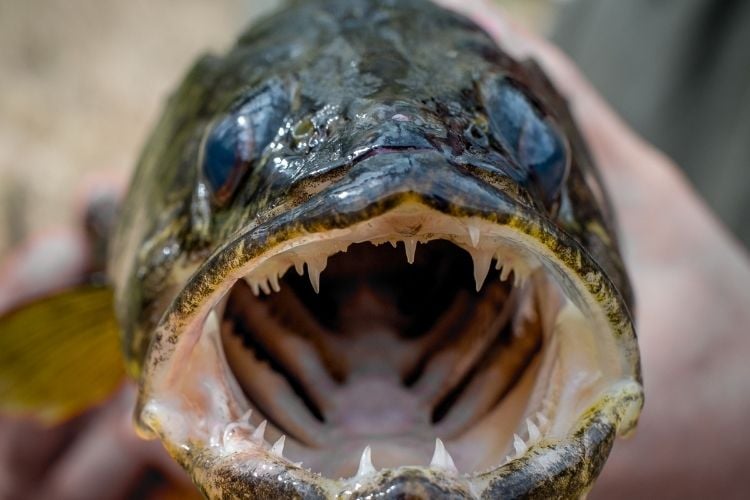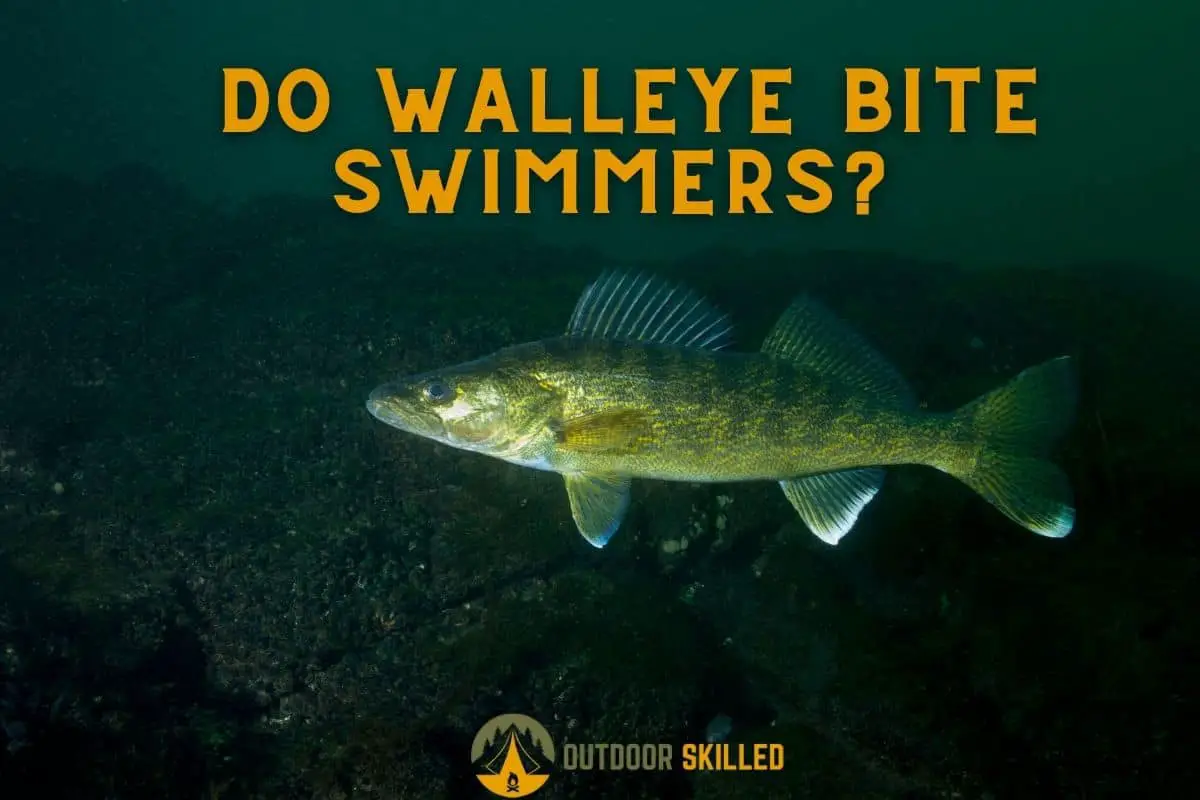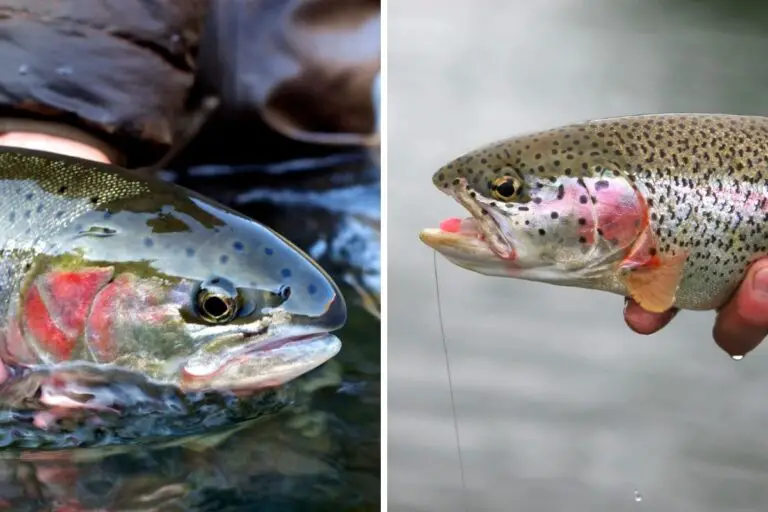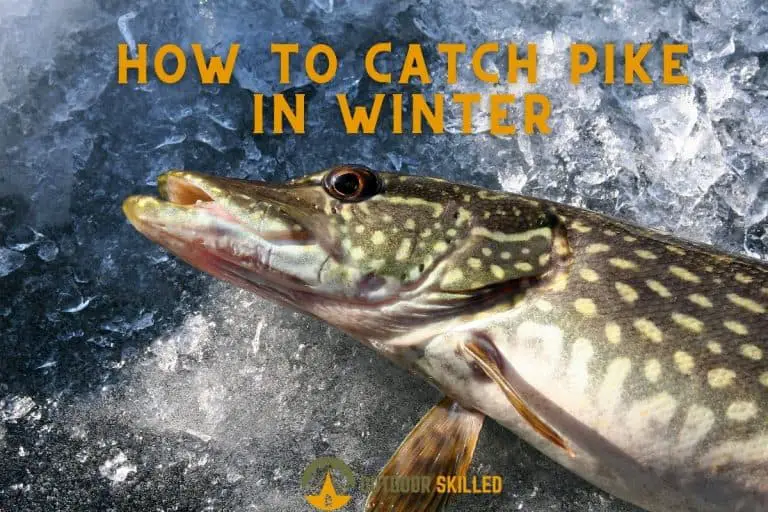Do Walleye Bite Swimmers? What to Watch Out For
Have you ever changed your mind or at least thought twice before swimming in a reservoir that is known to have predator fish in it? If you’re reconsidering swimming somewhere with walleye populations because you’re afraid you’ll get bitten by their sharp teeth, I encourage you to keep reading below.
Walleye do not bite swimmers. There are no reports of walleye attacking and biting swimmers in any lakes or reservoirs. They don’t attack humans intentionally to bite them or feed on their flesh, but if you get your fingers near their sharp set of teeth, you may get bitten.
Keep reading to know more about walleye and the myths of biting, and explore the extent of danger walleye have on humans.
Table of Contents
Do Walleye Bite Swimmers?

Walleye can have myths weaved around them because they’re predatory fish with sharp teeth that can cause harm of some level. But the truth is if you’re peacefully swimming somewhere and a walleye happens to be passing by, you’re in no danger.
Anglers may get bitten by walleye when they get their hand inside their mouths to remove the hook, and of course, swimmers are not prone to such situations. Another reassuring fact is that predatory fish like walleye never attack an object bigger than ⅓ of their body length, so they won’t attack you by targeting your flesh.
For more information, you can check out my other article on whether a walleye will bite a human.
Walleye’s sharp teeth make some people nervous. They attribute them to pike and muskie, which are also known to have sharp teeth, and they use them to attack humans, causing skin cuts and scrapes.
But it’s important to note that walleye teeth are not as sharp as other predatory fish that are reported to attack humans, like Muskies. You can learn more about why muskies attack humans here.
Are Walleyes Vicious or Dangerous?
Walleyes are vicious but not dangerous. They are predatory game fish that put up a fight when caught and don’t easily give in.
Despite being vicious in a way, walleye are not dangerous or threatening to humans. They won’t intentionally attack you or feed on you whether you’re swimming in a lake that has walleye populations or just dangling your hand from the fishing boat into the water.
Even if it happens and you get bitten, the bite often causes superficial cuts and scrapes that can be easily treated, and it doesn’t take long to recover.
Walleyes continue to be non-dangerous and non-poisonous even after they turn into a meal on your dinner table. Unlike some fish that can be unsafe to consume, walleye can form a nutritious, tasty meal when cleaned and cooked right. They indeed have some traces of mercury, but it’s not dangerous to consume if you limit your consumption to a maximum of 2 meals per week.
Walleye tastes good with a subtle sweet taste with mild fishiness, and it has lots of nutrients such as protein, omega-3 fatty acids, Niacin, vitamin D, Calcium, Iron, Magnesium, Phosphorus, Potassium, Sodium, Zinc, Vitamin C, and Vitamin A that help the body to maintain its healthy condition and cure diseases like anemia, digestive system conditions, and skin conditions.
Walleye Teeth
Like most predatory fish that feed on other fish, walleye have a set of sharp teeth in both jaws. Their feeding habits include swallowing prey headfirst. So their pointed teeth right at the front end of the mouth are positioned to hold small prey fish and prevent it from escaping, especially slimy fish and tiny ones that can get away.

Altogether, walleye can have from 30 to 40 canine teeth. The largest ones can be up to ½ inch (about 1.3 cm) long. Large ones are located far apart; smaller ones come in between them.
Smaller walleye teeth are more likely to be sharper than bigger ones, so don’t underestimate them. The reason is those small walleye teeth are more narrow and therefore have sharper tips that get more rounded with age.
Walleye teeth don’t produce any venom that can transfer to your body or cause any serious skin harm. The only side effect you may get from their bite is some infections caused by bacteria inside the walleye mouth, but they’re controllable, and there’s nothing to worry about.
Here you go; now you know the truth about walleye and its real dangers and limits. If you think you’re ready for your next walleye fishing adventure, make sure to check out my recommendations for the best Powerbait for walleye.
Related Questions
Do Lake Fish Bite Humans?
Lake fish can bite humans, even though these attacks are very rare. Lake fish don’t attack humans to feed on them; they attack them because they mistake their limbs for lures or something they can swallow. The bites are not dangerous in general.
Do Freshwater Fish Bite Humans?
Some freshwater fish bite humans, such as pike and muskie. They have sharp sets of teeth that can cause harm to human hands and feet. However, their attacks are rare and not intended for feeding. Freshwater fish don’t enjoy human flesh; if they attack, they do because they mistake it for lures.
What Does a Walleye Look Like?
Walleye are thin fish with long bodies and large mouths full of sharp teeth. Their colors are primarily gold and olive, with a white belly. They have two dorsal fins, one of them is spiny and the other one is soft-rayed. Their back is crossed with five or more black bands.
Reliable Rods You Will Love (and Can Afford)
- Fishing for Bass? Check out these very sturdy Bass Fishing Rods
- Ice Fishing? These Ice Fishing Rods Will Never Let your down
- Get the best Trout Fishing Rods here, and the best Catfish rods here
- No rods give you a better value for your money than these Saltwater fishing rods
- Get the best Telescoping fishing rods here, the best Baitcasting rods here, and check out these superb Kayak fishing rods here.
- Fishing the Flow: Expert Picks for the 15 Best River Fishing Rods
Helpful Resources
Walleye Teeth Facts: Everything You Need To Know
How to Fish for Walleye – Beginners Guide on How to Catch Walleye
If you like this article, please share it or pin it, you can find the share buttons below. We will really appreciate it ❤️











